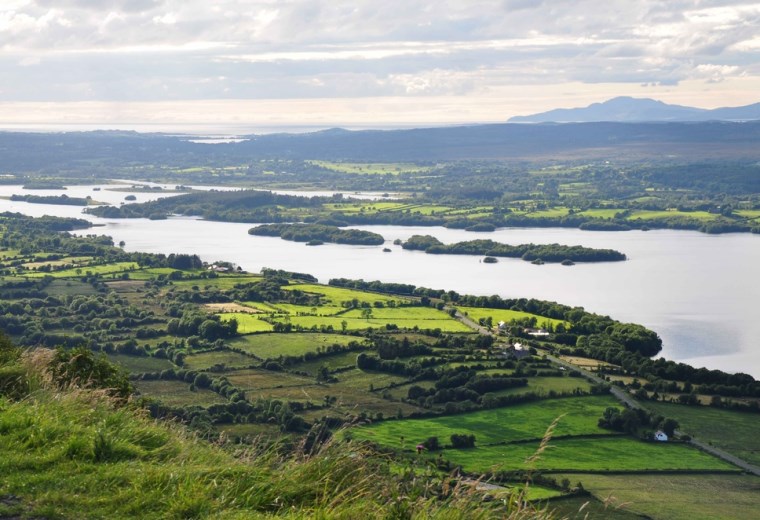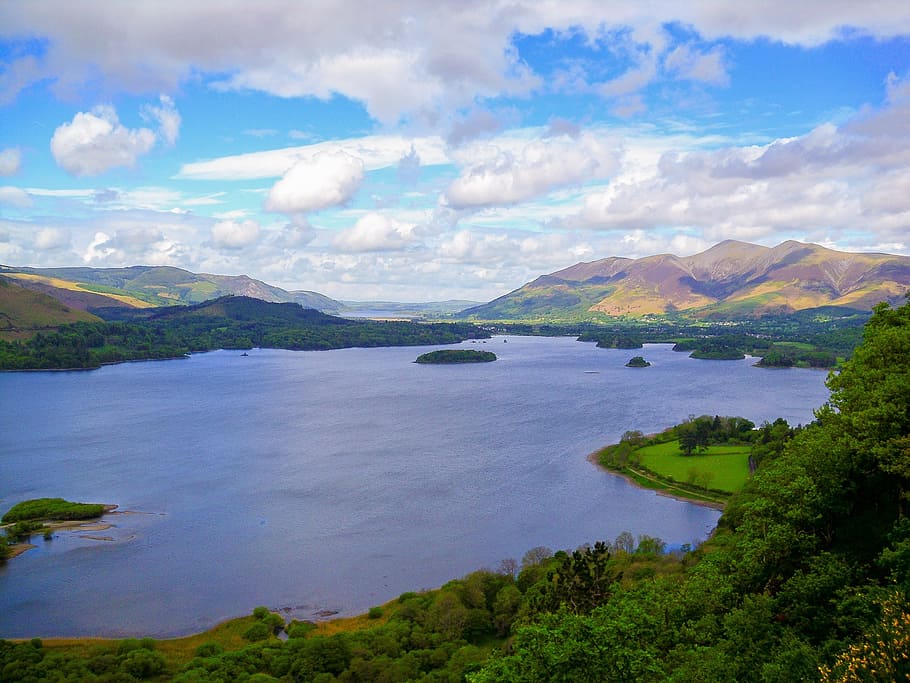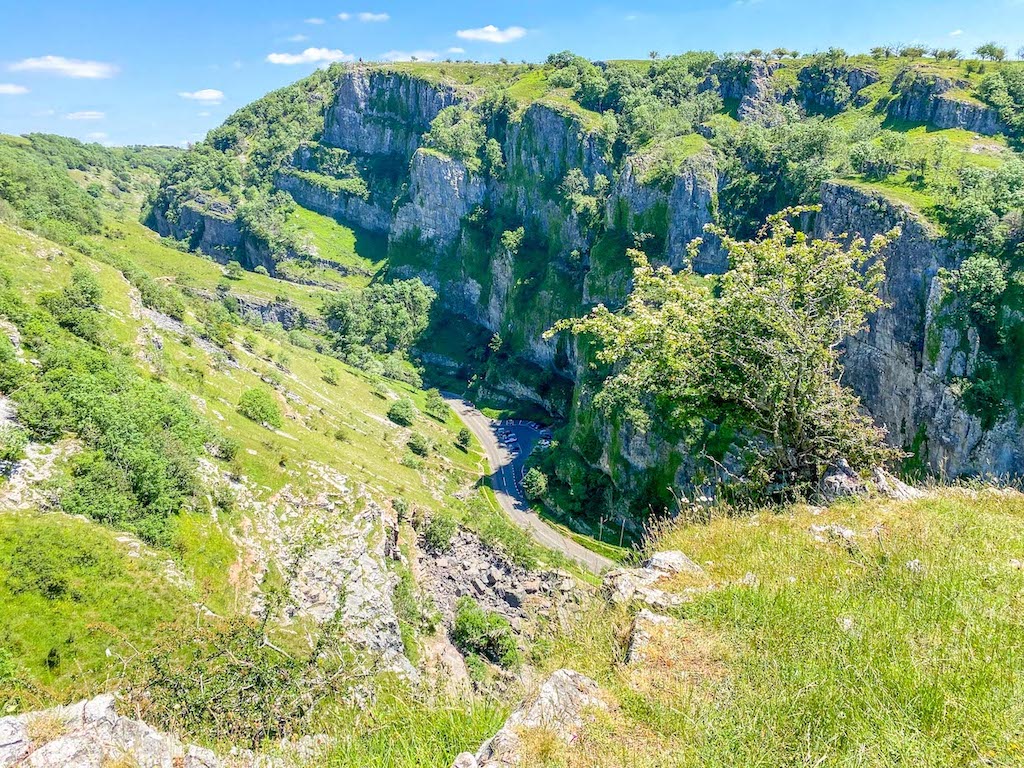Travel
The Most Amazing Natural Wonders To See In The UK

There are many sights in the UK that are worth seeing. However, if you seek the massive, stunning, otherworldly, and exquisite, you’ve come to the correct spot. The truth is that the vast British outdoors spoiled us rotten. And there are many underappreciated natural sites and treasures all across the place.
So, if you’re planning your next trip, whether it’s an outdoor getaway, trek, or bicycling vacation, roll up your sleeves and get your pen and paper ready, because you’ll want to make a note of these locations.
1. Malham Cove, North Yorkshire

This massive limestone cliff in Yorkshire stands 80 metres above the ground and has been attracting visitors from all over for ages. It is arguably best known as a filming location for Harry Potter and the Deathly Hallows.
Climb to the summit for stunning views of the surrounding village of Malham, or stand at the bottom and see the majestic cliff face, which curls inwards like a natural amphitheatre.
2. The Old Man of Storr, Isle of Skye

These spiky basalt rock formations sit atop Trotternish Ridge, overlooking the sweeping, mist-covered hills and craggy coastline of the Isle of Skye on Scotland’s western coast.
Geologists believe that the odd pointy formations were caused by a massive landslide hundreds of millennia ago. But, according to local legend, they are the fingers of a giant buried in the dirt beneath. I suppose we will never know the truth.
3. Scafell Pike, Cumbria

Scafell Pike, part of Cumbria’s Southern Fells, is England’s highest peak, standing at 978 metres above sea level. The Pike and the remainder of the Scafell massif, originally owned by Lord Leconfield, were donated to the National Trust in 1919 to honor Lake District residents who perished in World War I. A three-meter-tall cairn can be found at the summit.
Every year, over 250,000 people ascend to the top, with many undertaking the Three Peaks Challenge, which includes climbing Ben Nevis and Snowdon within a 24-hour period.
4. The Major Oak, Sherwood Forest

This enormous tree, estimated to be between 800 and 1,100 years old, has a massive 28-metre-wide canopy and is Britain’s largest oak. According to local legend, Robin Hood would sleep beneath its branches after gallivanting across the Nottingham forest, wooing Maid Marian and dodging the sheriff.
5. Duncansby Stacks, Caithness

These three sandstone stacks, which protrude into the North Sea near John O’Groats, have been worn by wind and waves over millennia into spectacular pointed cliffs.
The area is one of the best bird colonies in the UK, because to its offshore location, which provides a rich feeding ground for sea birds. With binoculars, you might be able to see kittiwakes, puffins, and razorbills nesting on the ledges of the stacks.
7. The Green Bridge of Wales, Pembrokeshire

When it comes to limestone arches, Dorset’s Durdle Door receives all the credit. But, you know what? It shouldn’t, because this massive bridge-like rock feature on the Pembrokeshire shore is also worth a visit.
A 24-meter-high arch made of 350-million-year-old carboniferous limestone, its unique shape is the consequence of millions of years of erosion by wind and sea.
8. High Force, County Durham

If you plan to see Teesdale’s beautiful waterfall, bring an anorak. The Tees begins as a small trickle atop the North Pennines and gradually evolves into a powerful, fast-moving river by the time it reaches the Whin Sill, where High Force may be found whooshing 21 metres down into a foaming plunge pool.
It’s perfect for cooling down on a hot summer day. And just as good? The surrounding region is ideal for spotting wildflowers, bunnies, and roe deer.
9. Durdle Door, Dorset

This 61-metre-tall limestone arch, discovered in a lonely place on Dorset’s 140-million-year-old Limestone Coast, was formed when caverns on either side of the rock were hollowed out via erosion, finally meeting in the middle. Every year, 200,000 people walk the pathway between Lulworth Cove and Durdle Door, making it a very popular attraction.
People frequently visit the World Heritage Site to gather fossils that fall to the beach as the stone is gently worn by wind and wave. Visit during the winter for the best possibility of collecting ammonites to take home as gifts.
10. Lough Neagh, Northern Ireland

Sure, the Lake District is attractive, but its small pools pale in comparison to this massive freshwater lake in Northern Ireland, which spans 151 square miles and borders five of the country’s six counties.
It is the largest lake in the UK, holding 800 billion gallons of water, and the only one from which you cannot see across to the other side when standing on its edge.
11. Galloway Forest Dark Skies Park, Dumfries and Galloway

It’s not often that you get to stare up at a night sky full with glittering stars (due to light pollution!). However, that is not the case in this secluded park in south-west Scotland, which became the world’s fourth accredited Dark Sky Park in 2009.
At night, more than 7,000 stars and planets are visible to the human eye. Do you want to view them up close? Bring your own telescope and look at the stars all night.
12. The Needles, Isle of Wight

These three chalk stacks, which rise 30 metres above sea level on the Isle of Wight’s western shore, are an unusual sight. They’re named after a fourth needle-shaped stack that was discovered in the same location but collapsed in a storm in the 18th century.
A lighthouse was built atop the outermost stack in the nineteenth century and is still operational. Visitors can get a closer look at the rocks by taking one of the short boat rides from neighboring Alum Bay or riding the Needles Chairlift.
13. Wistman’s Wood, Devon

This woods, which covers nine acres of high-altitude ground in the heart of Dartmoor National Park, dates back as far as 7000 BC and is a remnant of the ancient forest that originally covered the majority of Dartmoor.
The mystery location is mentioned in thousands of historical sources, and it is the subject of numerous myths and legends, ranging from accounts of old pagan rituals to ghosts and other unexplained events. And it’s easy to understand why: the stunted oak trees, with their twisting branches covered in lichen, are exactly the kind of site you’d expect to run into Sir Gawain or Morgan Le Fay. Don’t stay around after dark.
14. Fingal’s Cave, Inner Hebrides

This sea cave is located in a secluded area on the uninhabited Isle of Staffa in Scotland’s Inner Hebrides, within a portion of hexagonal basalt columns. This incredibly uniform rock structure forms when fissures occur in cooling lava, which also explains how the waves broke through, eventually eroding the rock into the massive 85-metre-deep cavern that exists today.
15. Seven Sisters, Sussex

These lovely chalk examples at the edge of the South Downs National Park deserve attention too, but Vera Lynn’s white cliffs of Dover steal the show.
The beautiful white cliffs are bordered by natural grassland, and the best coastal views are on one of the many scenic walking trails, such as the Seaford-Eastbourne clifftop trail. The seven hilltops may be called ‘sisters’ like the Greek mythological Pleiades.
16. Derwentwater, Cumbria

Derwentwater is the most picturesque of the sixteen lakes, meres, and ‘waters’ in the Lake District, albeit it is neither the largest nor the deepest. The three-mile-wide lake, south of Keswick, is surrounded by Cumbria’s most beautiful landscapes, including Friar’s Crag and lush woodland.
The lake, a Site of Special Scientific Interest, is home to Britain’s rarest fish, the Vendace, as well as many birds and wildfowl. Derwent Island, a lake island, with a National Trust-owned manor house open five days a week.
17. The Giant’s Causeway, County Antrim

Geologists say a volcanic outburst 60 million years ago generated this area of 40,000 interlocking basalt columns on County Antrim’s shore. As the cooled lava solidified, consistent fractures formed in the rock. The alternative (quite true) idea is that it is the remnants of a bridge erected by Irish giant Finn McCool, which spanned from Ireland to Scotland and was destroyed by the retreating Scottish giant Benandonner after he lost a duel with him. Seems possible.
18. Worms Head, Gower Peninsula

This narrow tidal island on the Gower Peninsula in south-west Wales feels like the end of the world off the windy Rhossili Bay. Since its Outer Head is only accessible two-and-a-half hours before low tide, check the tide schedules before visiting. As the water flows inland, many tourists are stuck, including Welsh poet Dylan Thomas, who spent a night on ‘the very promontory of depression’.
The name sounds pitiful, but it comes from the Old Norse word ‘wurm’, meaning ‘dragon’. See the headland’s silhouette on the water from afar to see why.
19. Arthur’s Seat, Edinburgh

Arthur’s Seat hikes are essential to Edinburgh visits. At 251 meters above sea level, its summit offers stunning views of the city, mountains, and sea. One theory is that the hill was called after King Arthur since Camelot was nearby.
Arthur’s Seat, Holyrood Park’s highest hill, is an ancient volcano that erupted an estimated 340 million years ago. It has died down, thankfully for Edinburghers.
20. Cheddar Gorge, Somerset

This limestone valley, Britain’s largest, cuts through the Mendip Hills in Somerset’s cheese capital with stalactite-filled caves and dramatic cliffs rising over 130 meters. In 1903, Britain’s oldest complete skeleton, Cheddar Man, was excavated in this Area of Outstanding Natural Beauty.
The wildlife is stunning too. If you’re lucky, you might see wild goats, endangered Soay sheep, or cave horseshoe bats eating green scrub.
21. Winnats Pass, Derbyshire

Winnats Pass was formed millions of years ago when melting glacier cave systems collapsed, creating the steep-sided valley. The SSSI is a goldmine for geologists and palaeontologists.
Once completely underwater, it contains hundreds of millions of years-old sea creature fossils and uncommon wildflowers like Jacob’s Ladder and Derby Hawkweed.












